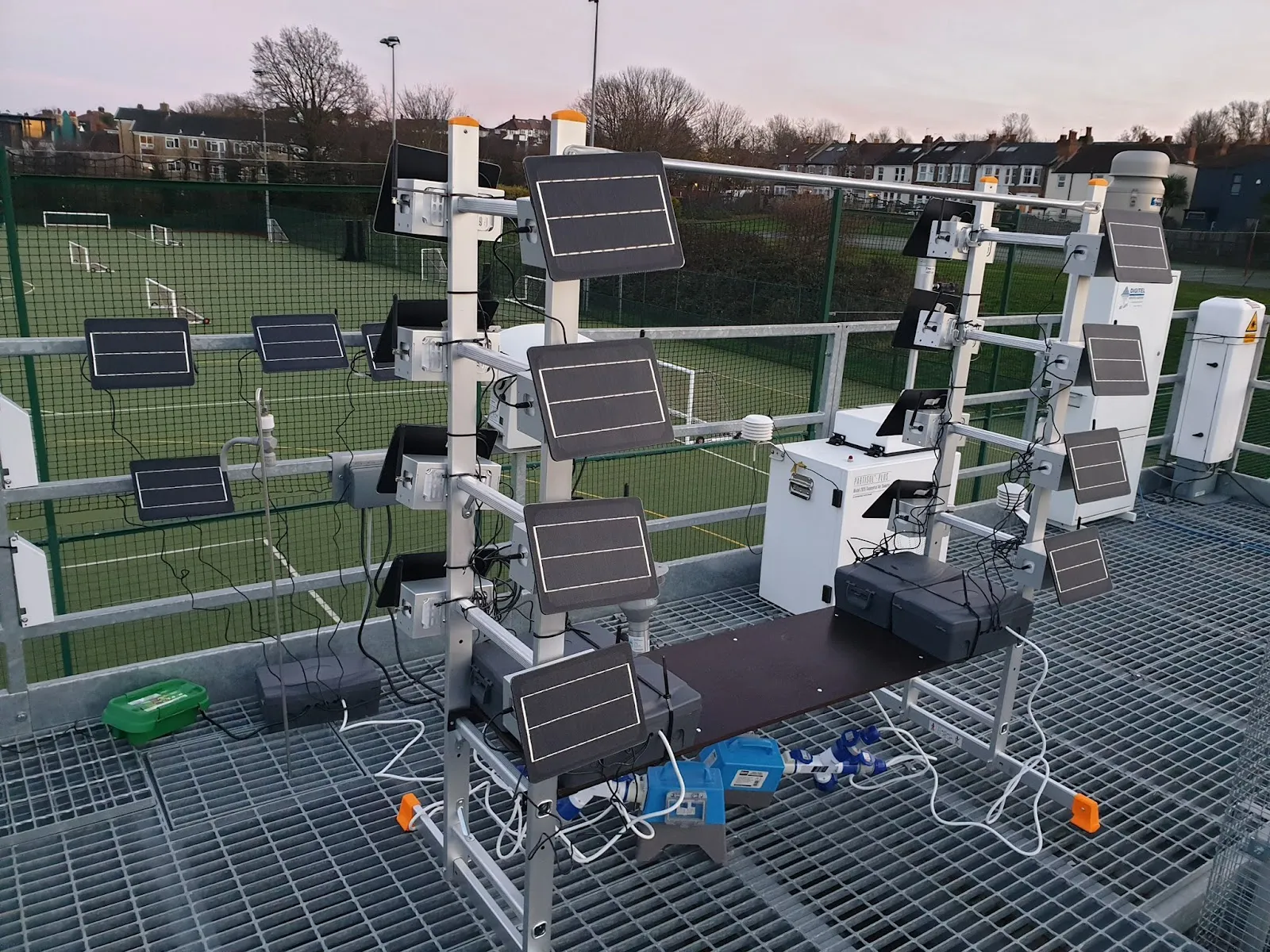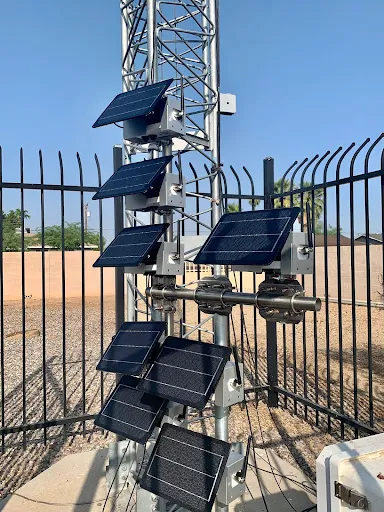
Apply now for a free year of testing Clarity's Sensing-as-a-Service solution
Government agencies and select qualified distributors with well-maintained FRM and/or FEM equipment (from the USEPA’s most current List of Designated Reference and Equivalent Methods) are eligible to apply for 1 year of free collocation testing.
Eligible applicants selected for the program will receive: one (1) year of Sensing-as-a-Service, including:
Eligible applicants selected for the program will receive: one (1) year of Sensing-as-a-Service, including:
All Clarity devices must remain collocated with the reference equipment for the duration of the one-year evaluation period. It may also be possible to include a Wind Module, Ozone Module, Black Carbon Module, and other Modules, but suitability will be evaluated on a case-by-case basis.
All Clarity devices must remain collocated with the reference equipment for the duration of the one-year evaluation period. It may also be possible to include a Wind Module, Ozone Module, Black Carbon Module, and other Modules, but suitability will be evaluated on a case-by-case basis.

Oops! Something went wrong while submitting the form.
Why try out air quality sensors?
For the equivalent cost of owning and operating one Federal Reference Monitor (FRM), you can deploy a network of dozens or hundreds of low-cost air quality sensors — meaning air quality sensors provide the ability to reliably and affordably collect air quality measurements in sites where no air quality data has historically been available.
Collocation testing provides insight into how a sensor will perform under local conditions — as well as providing valuable inputs for a future calibration model!
Collocation testing provides insight into how a sensor will perform under local conditions — as well as providing valuable inputs for a future calibration model!

Breathe easier with an air quality action plan
Equipment you'll need to perform testing per USEPA protocols
As long as you have access to the other equipment listed below, we’ll give you three (3) Node-S air quality sensors and access to all of the software and service components of our Sensing-as-a-Service solution — providing everything you need to perform collocation testing and better understand the performance of Clarity sensors.

USEPA Guidance on Air Sensor Setup at Testing Site
Recommendations
- Mount sensors within 20 meters horizontal of the FRM/FEM monitor
- Mount sensors in a location where they are exposed to unrestricted airflow
- Ensure the air sampling inlet for the sensors are with-in a height of ± 1 meter vertically of the air sampling inlet of the FRM/FEM monitor
- Mount sensors ~1 meter apart from each other
- If necessary, install sensors within a weather-protective shelter/enclosure that maintains ample airflow around the sensor (as recommended by the manufacturer)
Cautions
- Do not place sensors near structures/objects that can affect airflow to the sensor OR block the sensor air intake (e.g., against a wall, near a vent, or on the ground blocking the inlet)
- Do not place sensors near structures/objects that can alter T or RH near the sensor (e.g.,vents, exhausts)
- Do not place sensors near sources/sinks that can alter pollutant concentrations (e.g., idling cars, smoking)
- Do not place sensors in locations with risk of vibration, electrical shock, or other potential hazards
Breathe easier with an air quality action plan
Program Terms & Eligibility
The USEPA has provided guidance on recommended protocols for setting up and running evaluation testing — eligible applicants must be able to conduct collocation in line with USEPA recommendations, and:
- Must have access to well-maintained FRM/FEM equipment from the USEPA’s most current List of Designated Reference and Equivalent Methods as well as temperature (T) and relative humidity (RH) monitors at the test site.
- Must be able to collocate the Node-S sensor with FRM/FEM monitors for a minimum of 30 days and allow all equipment to run for at least 30 consecutive days during the same time period to allow for comparable results (per EPA recommendations).
- Must be able to provide both sensor data and reference data to Clarity for public consumption following the collocation testing period. Clarity reserves the right to use collocation results for marketing purposes.
- Offer only valid for government agencies or select qualified partner organizations. Current and past Clarity customers may not be eligible for this program.
- All Clarity equipment must remain collocated with the reference equipment for the duration of the one-year evaluation period.
- Shipping dates for Node-S devices will be confirmed directly with applicants selected for the program.
Breathe easier with an air quality action plan
Apply Now
FAQ - Collocation
Is there flexibility to move the sensors throughout the year to other sites with FEM/FRM equipment, or are they required to stay at one location for the 12 month period?

How is the data going to be used and would the DNR name be put on the data?

Is the data going to be publicly available during the collocation – who has access to it?
